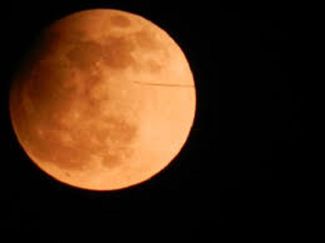November Supermoon
Last updated 11/9/2016 at 12:08pm
If you only see one astronomical event this year, make it the November supermoon, when the Moon will be the closest to Earth it's been since January 1948.
During the event, which will happen on the eve of November 14, the Moon will appear up to 14 percent bigger and 30 percent brighter than an average full moon. This is the closest the Moon will get to Earth until 25 November 2034, so you really don't want to miss this one.
So how do you get a supermoon?
As NASA explains, because the Moon has an elliptical orbit, one side – called the perigee – is about 48,280 km (30,000 miles) closer to Earth than the other side (the apogee).
When the Sun, the Moon, and Earth line up as the Moon orbits Earth, that's known as syzygy (definitely something you want to keep in your back pocket for your next Scrabble match).
When this Earth-Moon-Sun system occurs with the perigee side of the Moon facing us, and the Moon happens to be on the opposite side of Earth from the Sun, we get what's called a perigee-syzygy.
That causes the Moon to appear much bigger and brighter in our sky than usual, and it's referred to as a supermoon – or more technically, a perigee moon.
Supermoons aren't all that uncommon – we just had one on October 16, and after the November 14 super-supermoon, we'll have another one on December 14.
But because the November 14 Moon becomes full within about 2 hours of perigee, it's going to look the biggest it has in nearly seven decades.




